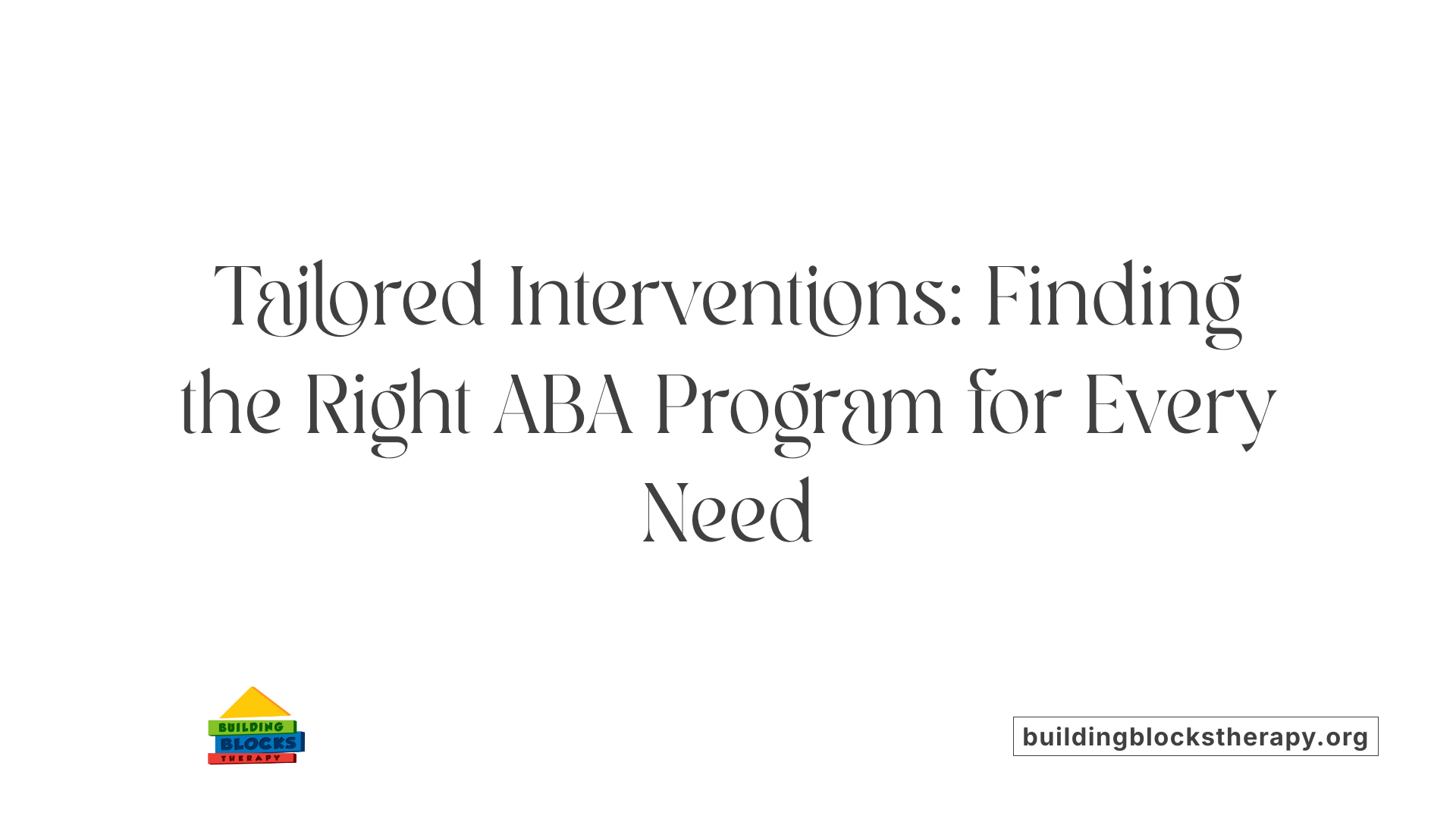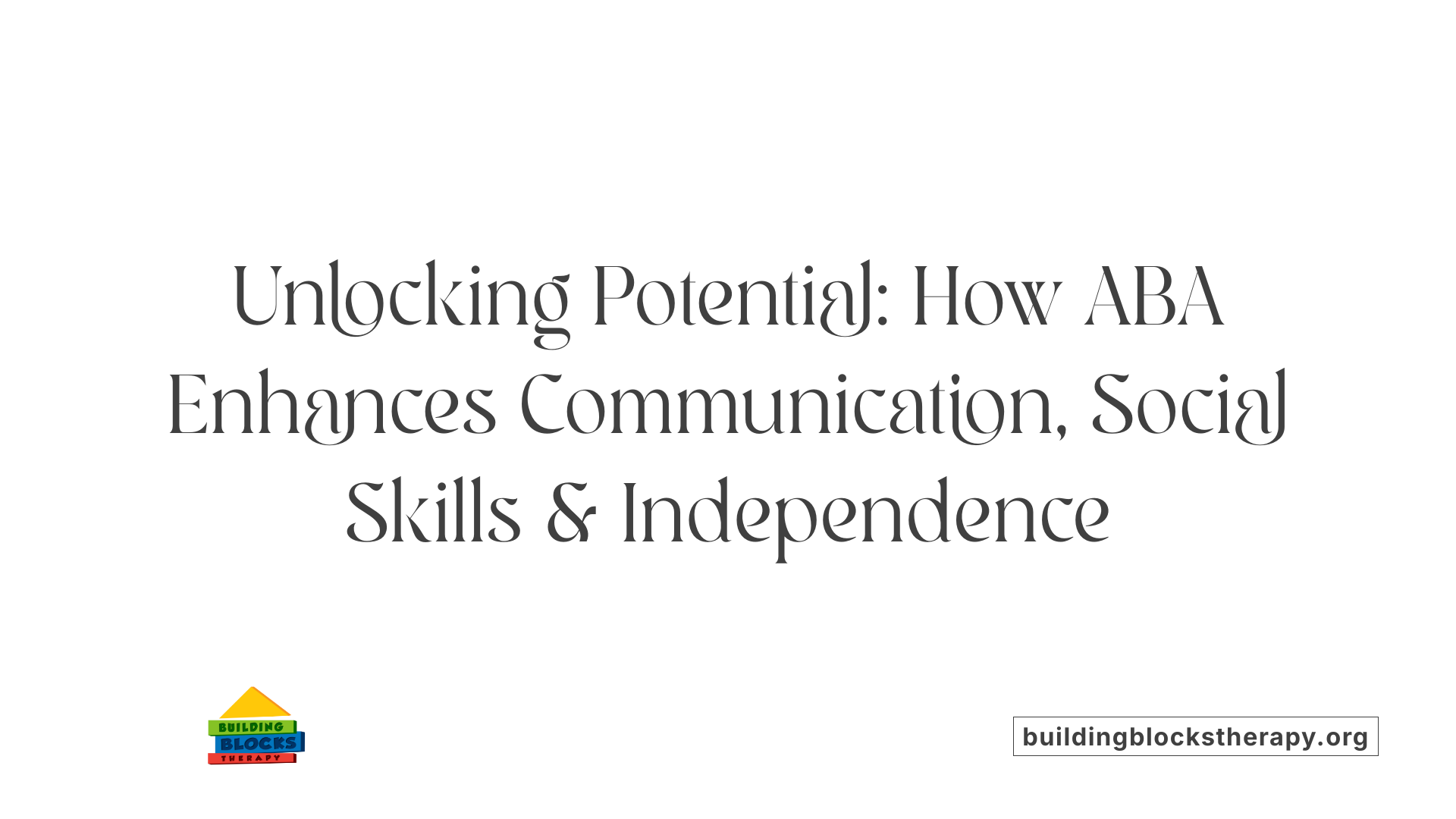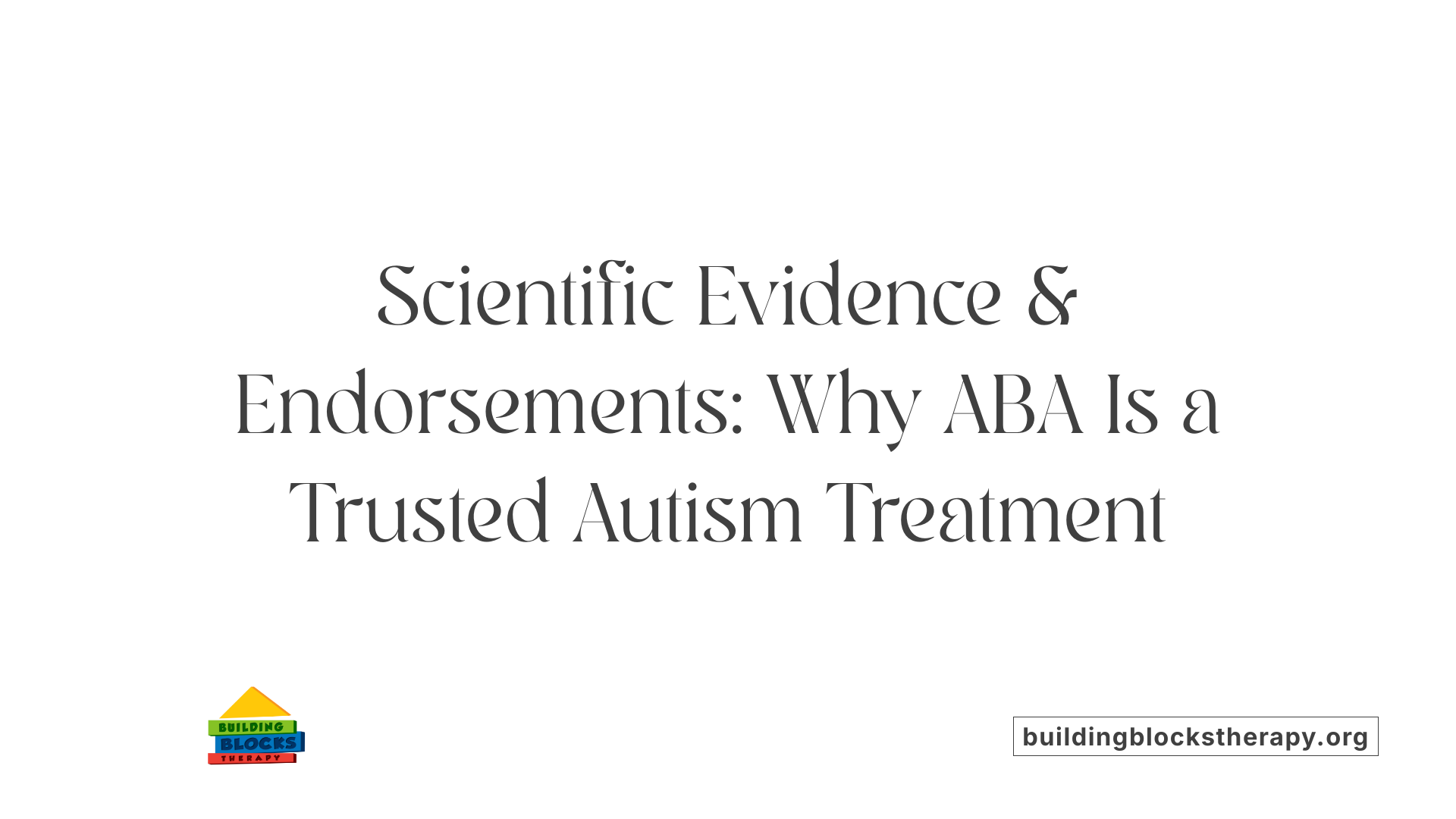Understanding the Different Types of ABA Therapy and Their Benefits
Exploring ABA Therapy: Techniques, Approaches, and Transformative Benefits for Autism

What is ABA Therapy and Why Does It Matter?
Applied Behavior Analysis (ABA) therapy is a scientific approach to understanding and improving behavior, widely recognized as an evidence-based treatment for autism spectrum disorder (ASD) and other developmental conditions. Rooted in the principles of learning and behavior science since the 1960s, ABA therapy aims to enhance socially significant skills while reducing behaviors that impede learning and independence. This article delves into the various types of ABA therapy, their techniques, and the profound benefits they offer across diverse age groups and developmental needs.
Foundational Principles and Goals of ABA Therapy

History and Science Behind ABA
Applied Behavior Analysis (ABA) is grounded in the science of learning and behavior, originating from behaviorism principles developed by psychologist Ole Ivar Lovaas in the 1960s. Since then, ABA has evolved into a widely researched, evidence-based approach used to understand how behavior works, how the environment influences actions, and how learning occurs.
Core Objectives of ABA Therapy
The primary goal of ABA therapy is to increase helpful and socially meaningful behaviors while decreasing harmful or interfering ones. Programs are designed to enhance intellectual functioning, language development, daily living skills, social interaction, and academic success. Early intensive interventions often involve 20–40 hours per week to build foundational abilities, whereas focused therapy targets specific skills or behaviors over a shorter period.
Role of Positive Reinforcement and ABCs
Positive reinforcement is central to ABA—rewarding desired behaviors encourages their recurrence. This approach has largely replaced earlier methods involving negative reinforcement or punishment, reflecting modern, ethical standards. The ABC model—antecedent, behavior, consequence—is fundamental in ABA, helping therapists identify triggers and outcomes to effectively teach and modify behavior.
Behavioral Targets Including Communication, Social Skills, and Self-Care
ABA therapy comprehensively addresses various skill areas such as communication (including expressive language and functional communication training), social skills, self-care routines like handwashing and toilet training, play, and motor skills. Tailored programs often incorporate naturalistic teaching strategies and real-life settings to generalize learning and foster independence across environments like home, school, and community.
Overview of Key ABA Techniques and Methods

Positive Reinforcement
Positive reinforcement is central to ABA therapy, where desirable behaviors are immediately rewarded to encourage their repetition. This technique focuses on increasing helpful behaviors by providing positive outcomes such as praise, tokens, or preferred activities.
Discrete Trial Training (DTT)
DTT is a structured teaching method involving one-on-one tasks broken into small, manageable steps. Each trial has a clear beginning and end, with opportunities for immediate reinforcement upon correct responses. It is highly effective in teaching specific skills in a systematic way.
Pivotal Response Training (PRT)
PRT emphasizes natural learning opportunities and child interests to target pivotal skills like motivation and self-initiation. It uses play and child-led activities with natural reinforcement to encourage development of skills relevant across multiple settings.
Functional Behavior Assessment (FBA)
FBA identifies the antecedents and consequences that maintain problem behaviors. By understanding the function or purpose of behaviors, individualized intervention plans are developed to replace undesirable behaviors with functional alternatives.
Natural Environment Teaching (NET)
NET integrates ABA techniques into everyday real-life settings to teach functional skills during common activities. This approach promotes generalization of skills by capitalizing on naturally occurring opportunities throughout the day.
Functional Communication Training (FCT)
FCT teaches alternative communication methods to replace challenging behaviors, enabling individuals to express needs and wants effectively. It is designed to improve communication skills and reduce problem behaviors.
Task Analysis and Chaining
Complex skills are broken down into smaller steps through task analysis. These steps are taught sequentially using chaining, where each step acts as a cue for the next, helping learners build independence in completing multi-step tasks.
Modeling
Modeling involves demonstrating a behavior for the learner to imitate. This method is often used to teach social skills, communication, and new tasks by providing clear examples.
Picture Exchange Communication System (PECS)
PECS is a communication technique that uses pictures to help individuals communicate their needs and desires. It is especially helpful for those with limited verbal skills and promotes functional communication.
| Technique | Description | Application Focus |
|---|---|---|
| Positive Reinforcement | Rewarding desirable behavior | Increasing helpful behaviors |
| Discrete Trial Training (DTT) | Structured, one-on-one teaching trials | Skill acquisition with clear steps |
| Pivotal Response Training (PRT) | Child-led, play-based approach | Motivation and pivotal skills development |
| Functional Behavior Assessment (FBA) | Identifying behavior functions | Behavior reduction and intervention planning |
| Natural Environment Teaching (NET) | Teaching in everyday settings | Skill generalization and natural learning |
| Functional Communication Training (FCT) | Teaching alternative communication | Reducing problem behavior through communication |
| Task Analysis & Chaining | Breaking tasks into steps taught sequentially | Teaching complex, multi-step skills |
| Modeling | Demonstrating behaviors for imitation | Social and communication skills |
| Picture Exchange Communication System (PECS) | Using pictures to facilitate communication | Functional communication for non-verbal learners |
Types of ABA Therapy Programs and Their Application

Comprehensive ABA therapy and Early Intensive Behavioral Intervention
Comprehensive ABA therapy is a broad and intensive approach aimed at developing multiple skill domains. Typically, it involves 20 to 40 hours of therapy per week, sustained over 1 to 3 years. A specialized form of this comprehensive therapy is Early Intensive Behavioral Intervention (EIBI), specifically designed for children under five years old. EIBI usually requires 30 to 40 hours weekly and focuses on building foundational skills critical for early development.
Focused ABA therapy
Focused ABA therapy targets specific behaviors or skill areas rather than broad developmental domains. It is usually provided for 10 to 20 hours per week over a shorter period. This form of therapy is often suitable for older children or those who require help with particular challenges or skills.
Natural Environment Teaching (NET)
Natural Environment Teaching (NET) integrates ABA techniques into everyday settings like homes, schools, and community spaces. This approach emphasizes teaching functional skills through real-life activities, making learning more relevant and generalizable.
The Early Start Denver Model (ESDM)
The Early Start Denver Model (ESDM) is an ABA-based, play-focused approach targeting children aged 12 to 48 months. Combining play and social interactions with ABA techniques, ESDM fosters language, social, and learning skills in a natural and engaging way.
Reggio ABA approach
The Reggio ABA approach blends creativity and child-led exploration with ABA principles. It promotes confidence, emotional regulation, and meaningful communication, offering a more holistic and exploratory method within the ABA framework.
Customization based on individual's age and needs
ABA therapy programs are extensively tailored to the individual's age, developmental level, and support requirements. Treatment plans are designed by Board Certified Behavior Analysts (BCBAs) to address specific goals and preferences, ensuring the therapy is effective and relevant.
Settings where ABA is provided
ABA therapy is highly flexible and delivered across various environments to support learning and generalization. Common settings include the home, school, outpatient clinics, and community locations. This flexible delivery ensures that skills learned in therapy translate to everyday situations and that caregivers are involved in natural settings.
Benefits of ABA Therapy Across Developmental Domains

How does ABA therapy improve language, communication, and social skills?
ABA therapy focuses on enhancing essential skills such as language development, communication, and social interaction. Through techniques like positive reinforcement and functional communication training, individuals learn to express themselves more effectively and engage meaningfully with others. These improvements help reduce frustration and unwanted behaviors that arise from communication challenges.
In what ways does ABA reduce problem behaviors?
ABA aims to decrease harmful or disruptive behaviors by replacing them with positive alternatives. Behavioral modification strategies, including discrete trial training and functional behavior assessments, identify triggers for problematic behaviors and use reinforcement to promote socially appropriate actions instead.
How does ABA enhance daily living and self-care skills?
ABA programs teach practical skills necessary for independence, such as handwashing, toilet training, grooming, and other self-care activities. These interventions help individuals function more successfully in everyday life and foster greater autonomy.
What impact does ABA have on emotional regulation and coping skills?
ABA supports emotional regulation by teaching coping mechanisms and distress tolerance. This helps individuals recognize and control their emotional reactions, promoting trust-based relationships and improved quality of life.
How does ABA support skill generalization and functional independence?
A major benefit of ABA is its focus on transferring learned skills across various settings—home, school, or community. This generalization ensures that improvements are meaningful and functional, leading to greater independence.
What are the effects of ABA on intellectual functioning and cognitive abilities?
Studies show that intensive, long-term ABA therapy can enhance intellectual functioning, memory, and cognitive skills. These gains contribute to better academic performance and daily success, laying the foundation for improved overall life outcomes.
The Role of Qualified Professionals and Family Involvement in ABA
Board Certified Behavior Analysts (BCBAs) and Their Responsibilities
A Board Certified Behavior Analyst (BCBA) is a qualified professional who designs and oversees ABA therapy programs. They conduct initial assessments, create individualized treatment plans, and continuously monitor progress to ensure interventions meet the learner’s specific needs. BCBAs are responsible for supervising therapists and adjusting programs based on ongoing data.
Data Collection and Ongoing Assessment
Data collection is a foundational practice in ABA therapy. Therapists gather detailed information on behaviors, skills, and responses during sessions. This continuous assessment allows for informed decisions about program modifications, ensuring that therapy remains effective and focused on measurable progress.
Therapist and Provider Roles Across Different Settings
ABA therapy providers include BCBAs and trained therapists who implement intervention strategies in homes, schools, outpatient clinics, and community environments. Therapists directly work one-on-one or in group settings with individuals, applying various ABA techniques tailored to each environment and learner.
Parent and Caregiver Training
An essential aspect of ABA is training parents and caregivers to support therapy goals in natural settings. They learn strategies to promote positive behaviors and social interaction, fostering skill generalization beyond structured sessions. This collaboration reinforces consistent learning opportunities throughout everyday routines.
Importance of Family Involvement and Naturalistic Learning Opportunities
Family involvement is critical to the success of ABA therapy. Engaged families provide emotional support, encouragement, and practical reinforcement, making learning more meaningful and enjoyable. Incorporating naturalistic learning opportunities within daily life encourages functional skills acquisition and supports generalization across various contexts.
Evidence Supporting ABA Therapy and Its Recognition by Authorities

What Scientific Studies Say About ABA Effectiveness
Research consistently demonstrates that Applied Behavior Analysis (ABA) therapy significantly improves intellectual functioning, language, social skills, and daily living abilities in many children with autism. Intensive ABA treatment—often exceeding 20 hours per week—has been linked to notable developmental gains and reduced need for future services. Studies confirm that ABA's focus on positive behaviors and skill development leads to measurable progress across various domains.
Which Major Health Organizations Endorse ABA?
ABA is recognized as an evidence-based best practice treatment for autism by authoritative bodies including the American Psychiatric Association (APA) and the US Surgeon General. These organizations endorse ABA due to robust research backing its effectiveness in enhancing communication, social skills, and adaptive behaviors while decreasing problematic behaviors.
How Does Insurance Impact ABA Therapy Access?
Insurance coverage for ABA varies widely across states and private policies. Many private insurers are mandated to cover ABA therapy, often required by law, while Medicaid programs often cover medically necessary ABA treatments. The typical cost averages around $120 per hour, influenced by the condition's severity and treatment intensity. Insurance plays a crucial role in making ABA accessible for families.
How Has ABA Adapted to Reflect Neurodiversity?
Modern ABA has evolved to prioritize positive reinforcement exclusively, moving away from earlier punitive methods. It also integrates a neurodiversity perspective that recognizes autism as a normal variation rather than a disorder. These adaptations promote respect for individual differences and emphasize therapy approaches that foster confidence, emotional regulation, and social connection in ways aligned with autistic individuals' needs.
Complementary Approaches and Broader Context of ASD Treatment
How do ABA and other therapies differ in supporting ASD?
Applied Behavior Analysis (ABA) primarily focuses on modifying behaviors through learning principles like positive reinforcement. Meanwhile, therapies such as speech and occupational therapy target specific developmental skills — speech therapy emphasizes communication skills, and occupational therapy enhances motor skills and sensory integration. These therapies work alongside ABA to provide holistic developmental support.
What psychological approaches help individuals with ASD?
Cognitive-Behavioral Therapy (CBT) is used to address anxiety, depression, and emotional challenges frequently encountered by individuals with ASD. CBT helps develop coping mechanisms through structured dialogue and cognitive restructuring, complementing ABA’s behavioral focus.
Which educational strategies assist learners with autism?
The TEACCH approach provides an educational framework relying on visual learning and structured environments. It supports comprehension and predictability, fostering greater independence and school success. This method complements ABA by focusing on educational settings.
What are social-relational interventions used for ASD?
Programs like DIR/Floor Time and Social Skills groups cultivate emotional connections and social understanding. DIR/Floor Time encourages child-led interaction to improve communication and emotional regulation, while social skills groups teach practical interpersonal skills. These methods nurture social bonds alongside ABA’s behavior-focused strategies.
How are medications used in ASD treatment?
While there are no medications that treat core ASD symptoms, drugs can manage co-occurring challenges such as anxiety, hyperactivity, seizures, sleep disturbances, and gastrointestinal issues. Medication use is typically integrated with behavioral and educational therapies for comprehensive care.
The Transformative Impact of ABA Therapy
ABA therapy stands as a scientifically validated and flexible approach tailored to improve behavioral, social, and communication skills in individuals with autism and related developmental disorders. By employing diverse and personalized techniques—from structured teaching methods to naturalistic play-based approaches—ABA facilitates lasting developmental gains, boosts independence, and enhances quality of life. Supported by extensive research and professional endorsement, ABA therapy continues to evolve with respect for neurodiversity, underscoring its critical role within a comprehensive treatment landscape.
References
- Applied Behavior Analysis (ABA)
- Applied Behavior Analysis (ABA)
- ABA Therapy for Autism | Benefits, Techniques & How It ...
- Treatment and Intervention for Autism Spectrum Disorder
- Applied Behavioral Analysis: Overview, Techniques & Cost
- Are There Different Types of ABA Therapy?
- Applied Behavior Analysis





